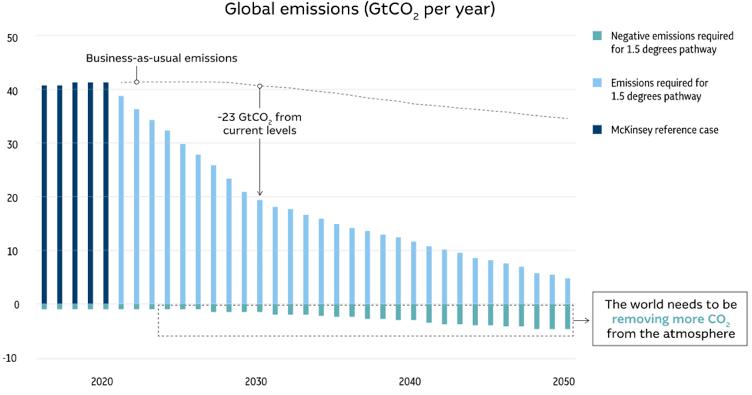
4 minute read
Macquarie Asset Management ~ Nature-based Solutions

Nature-based solutions and the evolution of agriculture
Advertisement
Farming intensification has increased over the past half-century while there has been a rising societal awareness of the importance of managing natural resources in a way that preserves them for current and future generations. Instead of pitting the needs of nature and humankind against one another, however, this divergence has renewed recognition within the agricultural community that productivity, profitability, and sustainability can go hand-in-hand.
Agricultural operations are responsible for 14 per cent of Australia's greenhouse gas emissions, yet the land they use accounts for 55 per cent of the country’s entire landmass. As well-managed land has a high carbon sequestration potential, the opportunity exists for the nation’s pastoral and arable businesses to play a lead role in achieving net zero emissions by 2050.
Nature-based solutions
The greater importance now placed on ecological custodianship by society and governments alike is increasingly allowing the costs of environmental management to be shared more broadly.
Elizabeth O'Leary, Head of Agriculture and Natural Assets at Macquarie Asset Management (MAM), says this shift in public perception has expanded how landscapes are managed.
Global emissions (GtCO2 per year)

Negative emissions are needed to limit global warming. Source: Adapted from ‘A blueprint for scaling voluntary carbon markets to meet the climate challenge,’ McKinsey, 2021.
A new generation of active sustainability practices has emerged as a result: nature-based solutions (NBS), which use ecological activities such as tree planting, revegetation, and watershed protection to address societal challenges like climate change, food security and disaster risk reduction.
Proving the concept
Paraway – one of MAM’s operating companies – has taken an active role in trialling NBS in the carbon and biodiversity spaces. Paraway has been exploring how to reduce the emissions intensity of beef cattle production by improving the way herds are managed, while also exploring opportunities presented by new techniques.
One such technique includes using a seaweed-based feed supplement to inhibit the production of climate-detrimental methane emissions by ruminant livestock, through an investment in Sea Forest. As well as reducing a herd’s climate footprint by cutting methane production, because the metabolic conversion of the gas uses a fifth of feed energy, limiting it can also increase productivity with a reduced amount of feed – creating more food with less environmental impact.
Making commercial sense
“Alongside a demonstrable impact on the environment, these projects can now generate bottom-line returns for the farms involved,” says O’Leary. “The scale and reach that we have across most cropping and pastoral regions in Australia gives us the unique ability to pioneer new initiatives that have the potential to be game-changing if they can be proven and scaled.”
Carbon sequestration projects began as a way for the sector to reduce its own emissions but expanding their use to meet the growing demands of other sectors for climate change mitigation activity – especially those classed as ‘hard to decarbonise’ – can be done with relative ease and has inherent value.
“Unlike some other industries grappling with a net zero commitment, with agriculture, all of these initiatives enhance returns,” says O’Leary.
The future of farming
Australia’s crop and grazing industry has made among the most significant reductions in emissions of any of the country’s major industrial sectors – cutting them by around 71 per cent over the past three decades. Much of this decrement has come about through changes to land management practices, however the growth of the use of NBS is playing an increasingly important role.
Though estimates vary, up to a quarter of crop and grazing lands could be used for various forms of soil carbon sequestration projects by the middle of this century –potentially extracting between 35 and 90 million tonnes of CO₂ per annum from the atmosphere.
“Sustainability has always been a driving factor in the management of our agricultural assets,” concludes O’Leary. “However, we have a clear initiative to go beyond standard farm practices to leverage and enhance our natural capital to create resilient production systems and be an industry leader in farm-based decarbonisation.”








